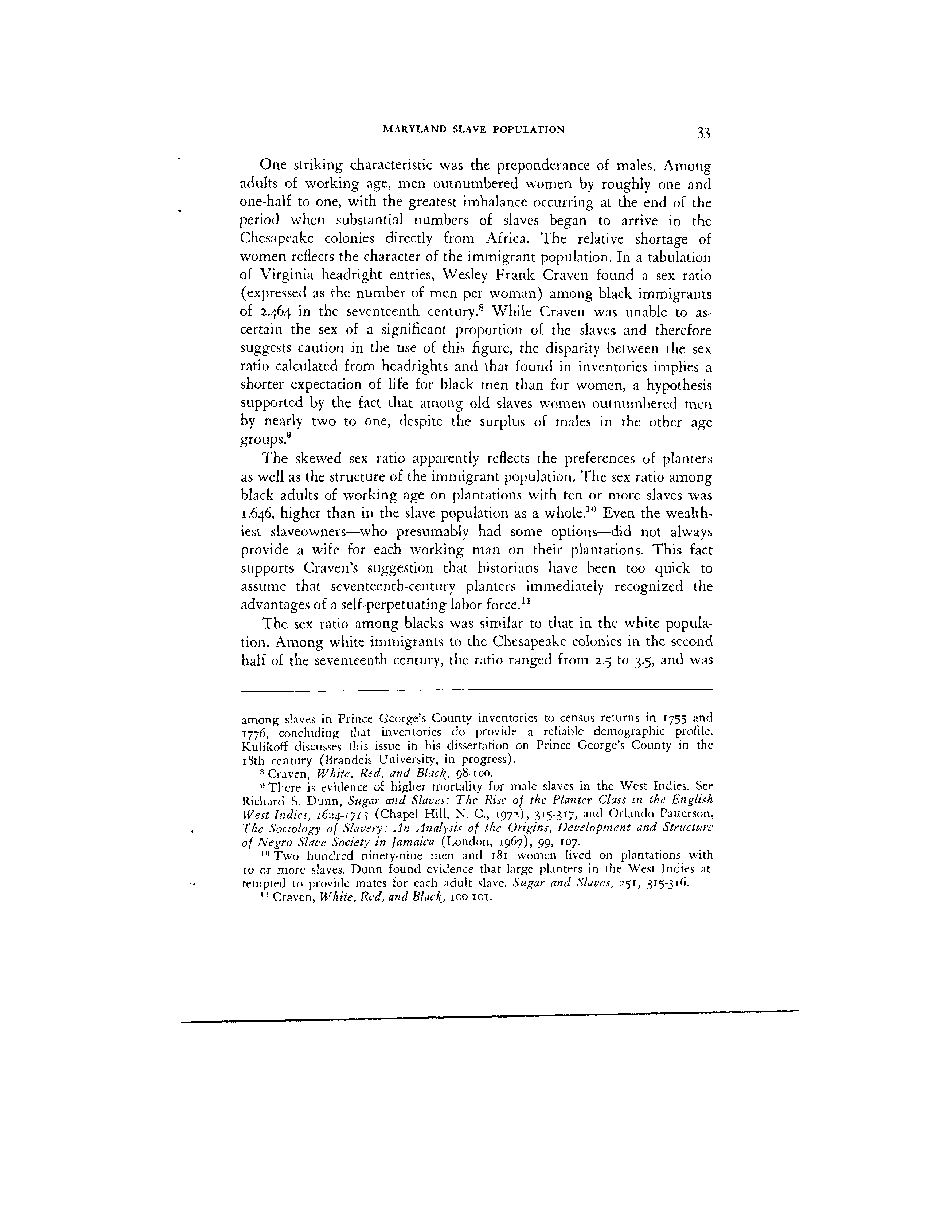|
MARYLAND SLAVE POPULATION
33
One striking characteristic was the preponderance of males. Among
adults of working age, men outnumbered women by roughly one and
one-half to one, with the greatest imbalance occurring at the end of the
period when substantial numbers of slaves began to arrive in the
Chesapeake colonies directly from Africa. The relative shortage of
women reflects the character of the immigrant population. In a tabulation
of Virginia headright entries, Wesley Frank Craven found a sex ratio
(expressed as the number of men per woman) among black immigrants
of 2.464 in the seventeenth century.8 While Craven was unable to as-
certain the sex of a significant proportion of the slaves and therefore
suggests caution in the use of this figure, the disparity between the sex
ratio calculated from headrights and that found in inventories implies a
shorter expectation of life for black men than for women, a hypothesis
supported by the fact that among old slaves women outnumbered men
by nearly two to one, despite the surplus of males in the other age
groups.9
The skewed sex ratio apparently reflects the preferences of planters
as well as the structure of the immigrant population. The sex ratio among
black adults of working age on plantations with ten or more slaves was
1.646, higher than in the slave population as a whole.10 Even the wealth-
iest slaveowners—who presumably had some options—did not always
provide a wife for each working man on their plantations. This fact
supports Craven's suggestion that historians have been too quick to
assume that seventeenth-century planters immediately recognized the
advantages of a self-perpetuating labor force.11
The sex ratio among blacks was similar to that in the white popula-
tion. Among white immigrants to the Chesapeake colonies in the second
half of the seventeenth century, the ratio ranged from 2.5 to 3.5, and was
among slaves in Prince George's County inventories to census returns in 1755 and
1776, concluding that inventories do provide a reliable demographic profile.
Kulikoff discusses this issue in his dissertation on Prince George's County in the
r8th century (Brandeis University, in progress).
8 Craven, White, Red, and Black., 98-100.
3 There is evidence of higher mortality for male slaves in the West Indies. See
Richard S. Dunn, Sugar and Slaves: The Rise of the Planter Class in the English
West Indies, 1624-171] (Chapel Hill, N. C., 1972), 315-317, and Orlando Patterson,
The Sociology of Slavery: An Analysis of the Origins, Development and Structure
of Negro Slave Society in Jamaica (London, 1967), 99, 107.
10 Two hundred ninety-nine men and 181 women lived on plantations with
10 or more slaves. Dunn found evidence that large planters in the West Indies at-
tempted to provide mates for each adult slave. Sugar and Slaves, 251, 315-316.
11 Craven, White, Red, and Elac\, 100-101.
�
|

